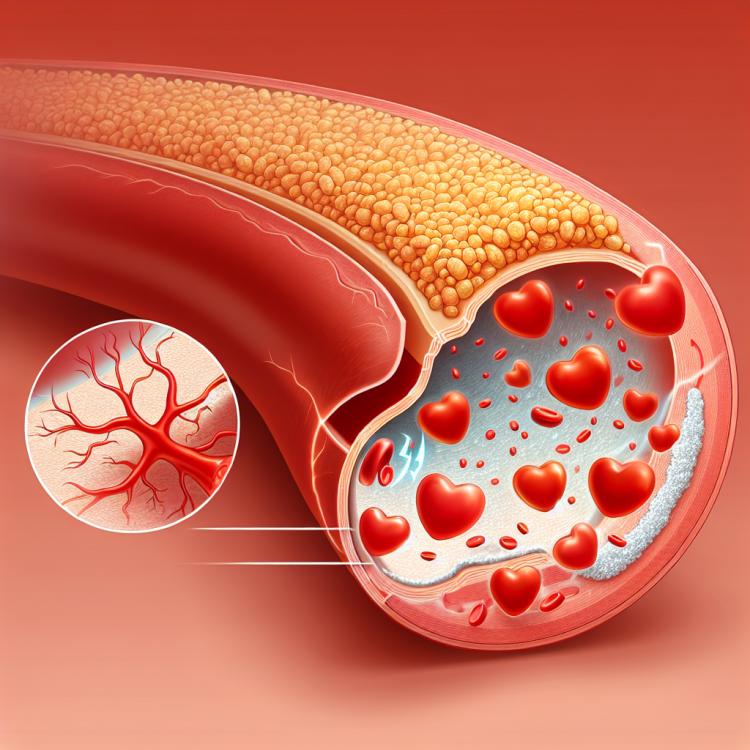
Cholesterol levels: how to understand hypercholesterolemia
- The concept of hypercholesterolemia
- Factors influencing hypercholesterolemia
- Signs and symptoms of hypercholesterolemia
- Medical opinion on the treatment of hypercholesterolemia
- Methods for diagnosing hypercholesterolemia
- Principles of treating hypercholesterolemia
- Measures for the prevention of hypercholesterolemia
- Unusual informational aspects about hypercholesterolemia
- FAQ
The concept of hypercholesterolemia
Hypercholesterolemia is a condition characterized by elevated levels of cholesterol in the blood. High cholesterol levels can contribute to the development of atherosclerosis and increase the risk of cardiovascular diseases. Hypercholesterolemia can occur due to both hereditary factors and unhealthy eating habits, lack of physical activity, and other pathologies affecting lipid metabolism.
Factors influencing hypercholesterolemia
Hypercholesterolemia can have a variety of causes. Some of them include genetic factors, a diet high in saturated fats, insufficient physical exercise, excess weight, and certain diseases such as diabetes and hypothyroidism. These factors can affect cholesterol levels in the blood, leading to the development of hypercholesterolemia and increasing the risk of cardiovascular diseases.
- Genetic factors: Hereditary predispositions may contribute to high cholesterol levels in the blood.
- Diet rich in saturated fats: Consuming foods high in saturated fats can increase cholesterol levels.
- Insufficient physical exercise: A sedentary lifestyle may contribute to the development of hypercholesterolemia.
- Excess weight: Obesity can exacerbate cholesterol problems and increase the risk of cardiovascular diseases.
- Comorbid diseases: Other conditions, such as diabetes and hypothyroidism, may be associated with elevated cholesterol levels.
Signs and symptoms of hypercholesterolemia
Hypercholesterolemia usually does not manifest with obvious symptoms and often goes unnoticed until serious complications occur, such as cardiovascular diseases. However, high cholesterol levels can be associated with certain signs, such as xanthomas (fat deposits in various parts of the body) or yellow deposits on the eyelids above the eyes, arterial hypertension, angina, chest pain, or jaundice. Therefore, it is important to regularly check cholesterol levels in the blood and monitor one’s health to timely detect and manage hypercholesterolemia.
- Xanthomas: Yellow deposits of fat under the skin, especially in the area of tendons, usually around the joints.
- Hypertension: Elevated blood pressure in the arteries can be one of the signs of hypercholesterolemia.
- Angina: Pain, pressure, or a squeezing sensation in the chest that occurs with physical exertion or stress may be related to hypercholesterolemia.
- Jaundice: A change in skin color to a yellowish tint may be a sign of lipid metabolism disorder and hypercholesterolemia.
- Chest pain: Unpleasant sensations in the chest area may be associated with hypercholesterolemia and need the attention of a specialist.
Medical opinion on the treatment of hypercholesterolemia
Medical opinion on the treatment of hypercholesterolemia is focused on lowering cholesterol levels in the blood and reducing the risk of cardiovascular diseases. The main methods of treating hypercholesterolemia are lifestyle changes, such as healthy eating and moderate physical exercise, as well as the use of medications like statins, fibrates, or other drugs. Experts emphasize the importance of an individualized approach to treatment based on cholesterol levels, the presence of other diseases, and risk factors to achieve the best results in the prevention and treatment of cardiovascular diseases.

Methods for diagnosing hypercholesterolemia
To diagnose hypercholesterolemia, a doctor may conduct a blood test for total cholesterol, LDL (low-density lipoproteins), and HDL (high-density lipoproteins). Additional diagnostic methods may include measuring triglycerides and calculating the atherogenic index. These data will help the doctor assess the risk of cardiovascular diseases and choose the appropriate treatment for the patient.
- Blood test for total cholesterol: measuring the level of total cholesterol in the blood helps assess the risk of hypercholesterolemia.
- Study of LDL and HDL levels: analysis of low-density and high-density lipoprotein content allows determining the distribution of cholesterol in the body.
- Assessment of triglyceride levels: measuring the triglyceride content in the blood provides information about overall fat metabolism.
- Calculation of the atherogenic coefficient: this indicator allows assessing the balance between “good” and “bad” cholesterol.
- Use of additional diagnostic methods: the doctor may prescribe additional studies, such as examining atherosclerotic plaques or an ultrasound examination of the heart, for a detailed analysis of the patient’s condition.
Principles of treating hypercholesterolemia
- Healthy eating: Limiting the intake of saturated fats and cholesterol, increasing the consumption of vegetables, fruits, grains, and fish.
- Physical activity: Regular exercise and physical activity help lower cholesterol levels and support cardiovascular health.
- Avoiding harmful habits: Smoking and excessive alcohol consumption can raise blood cholesterol levels and worsen the condition.
- Medication: A doctor may prescribe medications such as statins, fibrates, or other agents to lower cholesterol, depending on the patient’s individual needs.
- Regular medical check-ups: Conducting tests for cholesterol levels and following the doctor’s recommendations will help manage and control hypercholesterolemia.
Measures for the prevention of hypercholesterolemia
- Proper nutrition: Including vegetables, fruits, whole grains, fish, nuts in the diet, and limiting saturated fats and trans fats. These foods can help lower blood cholesterol levels.
- Physical activity: Regular moderate physical activity contributes to lowering cholesterol levels and strengthening the cardiovascular system.
- Maintaining a healthy weight: Avoiding excess weight and managing weight through healthy eating and exercise can help reduce the risk of hypercholesterolemia.
- Quitting smoking: Smoking increases blood cholesterol levels and raises the risk of cardiovascular diseases. Quitting smoking reduces this risk.
- Regular monitoring of cholesterol levels: Conducting regular blood tests will help detect high cholesterol levels in a timely manner and take necessary measures to manage it.
Unusual informational aspects about hypercholesterolemia
Another interesting fact is that while high cholesterol levels are generally viewed as a negative health factor, research also indicates the importance of cholesterol for the normal functioning of the body. For example, cholesterol is necessary for the production of hormones, including sex hormones, as well as for the formation of cell membranes. Therefore, it is important to maintain a balance of cholesterol in the body to support optimal health.